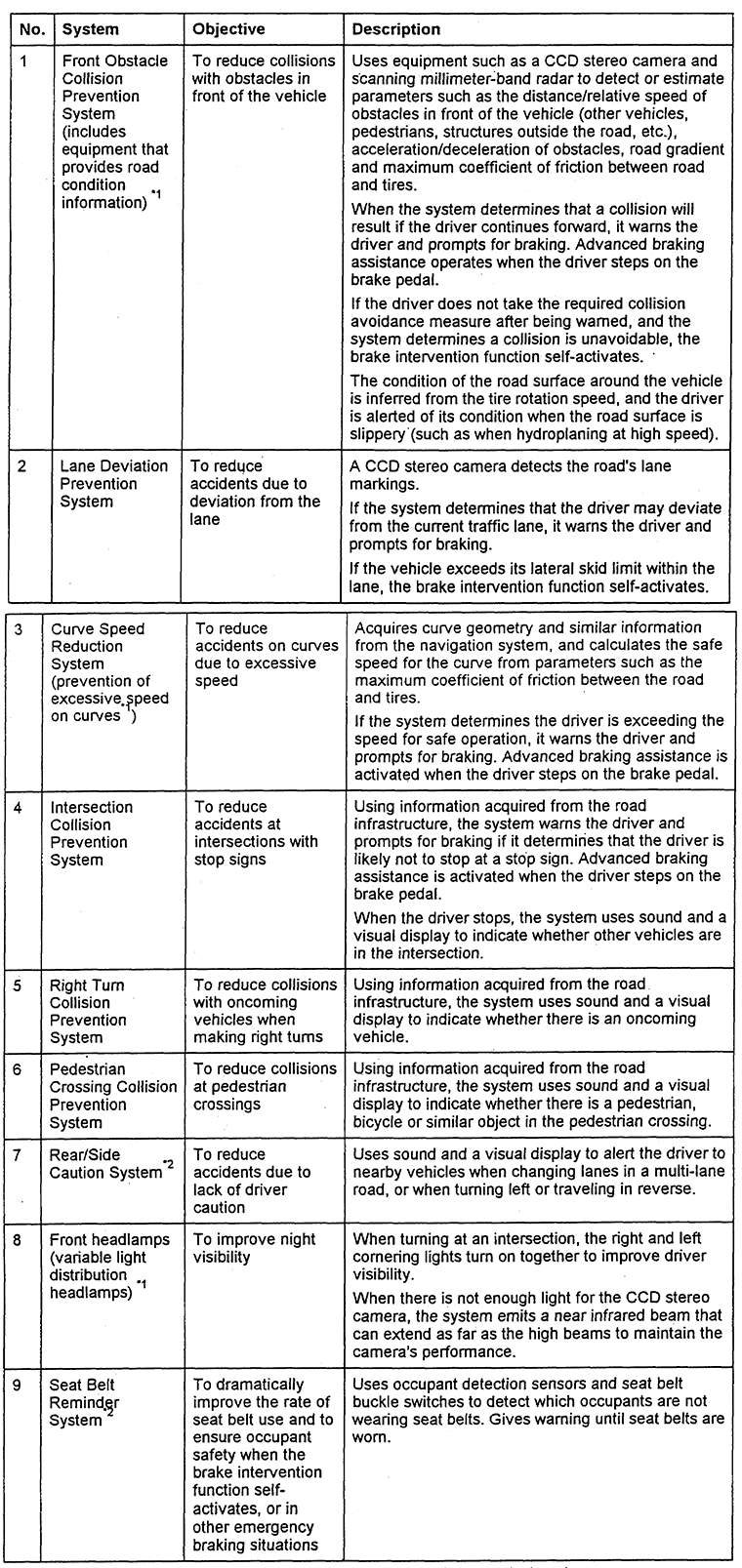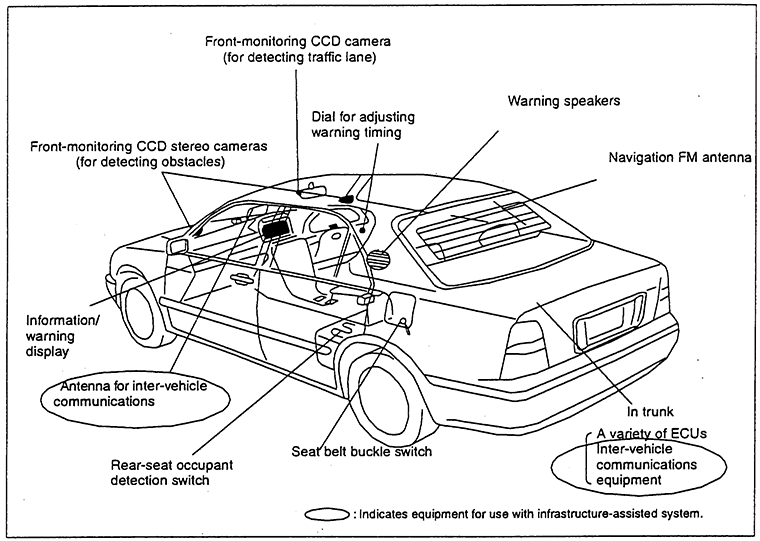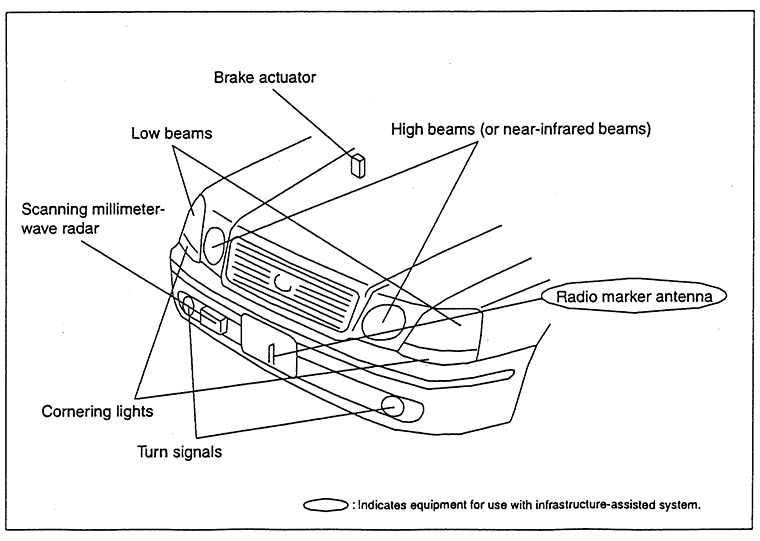Sep. 11, 2000
New Toyota ASV Focuses on Preventive Safety
Tokyo―TOYOTA MOTOR CORPORATION (TMC), in its untiring quest for improved automobile safety, has developed the accident-deterring Toyota ASV-2 and plans to exhibit this advanced safety vehicle in November at Smart Cruise 21 Demo 2000, a public demonstration of traffic assistance systems sponsored by Japan's Ministry of Transportation and Ministry of Construction.
TMC has always worked actively on both preventive and collision safety measures and has taken part in various R&D projects involving advanced technology to promote the application of more-advanced safety systems. Representative of these endeavors is the Ministry of Transportation's Advanced Safety Vehicle (ASV) R&D project, aimed at the implementation of new safety systems by the beginning of the 21st century. In the first phase of this project, TMC completed its first ASV model in March 1995, and has since adopted some of that experimental car's safety technologies in production models.
The Toyota ASV-2 was developed during the second phase of the ASV project, which TMC joined in 1996. The ASV-2 contains an advanced autonomous onboard safety system and focuses on preventive safety with an infrastructure-assisted safety assistance system that works together with roadside infrastructure. Development of the ASV-2 was based on the following two concepts:
Representative of this concept is a system that, although based on measures to prompt the driver to apply the brakes when necessary, goes a step further by ensuring the essential speed reduction when the driver steps on brakes too late or not hard enough. Also, a brake intervention system self-activates when the driver fails to hit the brakes, such as in a panic situation.
Representative of this concept are systems that employ accident preventing electronics and a driver-set dial that controls the timing for warnings, reducing their intrusiveness.
The Toyota ASV-2 features nine safety systems. One of these systems, the Front Obstacle Collision Prevention System, helps prevent collisions with obstacles in front of the vehicle. It incorporates new technologies, such as a new CCD stereo camera-equipped image processing system to detect obstacles in the current traffic lane and a system for estimating the maximum coefficient of friction between the road and tires during normal driving (calculated from tire rotation speed).
With the aim of adopting these new safety systems in production vehicles as soon and as to the furthest extent possible, TMC is planning additional technical research in actual traffic, working on areas such as reducing system annoyance and improving reliability. Other issues being addressed, through discussions with the regulatory organizations concerned and other means, include determining driver responsibility in the case of accidents, prioritizing infrastructure and lowering insurance premiums according to the systems' estimated accident reduction effectiveness.
9 Safety Assistance Systems

- *1
- Descriptions in parentheses indicate ASV promotion study group designations.
- *2
- Already in practical use.
There are also infrastructure-assisted versions of systems 1 and 3 that use information acquired through vehicle-to-vehicle communications.
Safety-Support System Components






